Ælfgif-who? provides short biographies of early medieval English women. Click on the podcast player if you’d like to hear this newsletter read aloud in my appealing Yorkshire accent.
Today Ælfgif-who? subscribers are in for an unexpected treat. While my expertise is women who lived in early medieval England, I have enlisted the help of my esteemed colleague Dr Chris Halsted, a lecturer at University of Maryland College Park, to tell you about a fascinating woman who lived across the sea in the kingdom of Lotharingia. Chris researches gender, ethnicity and geography in early medieval texts and is particularly interested in women who have been accused of magic and witchcraft - like Waldrada, the subject of this month’s newsletter.
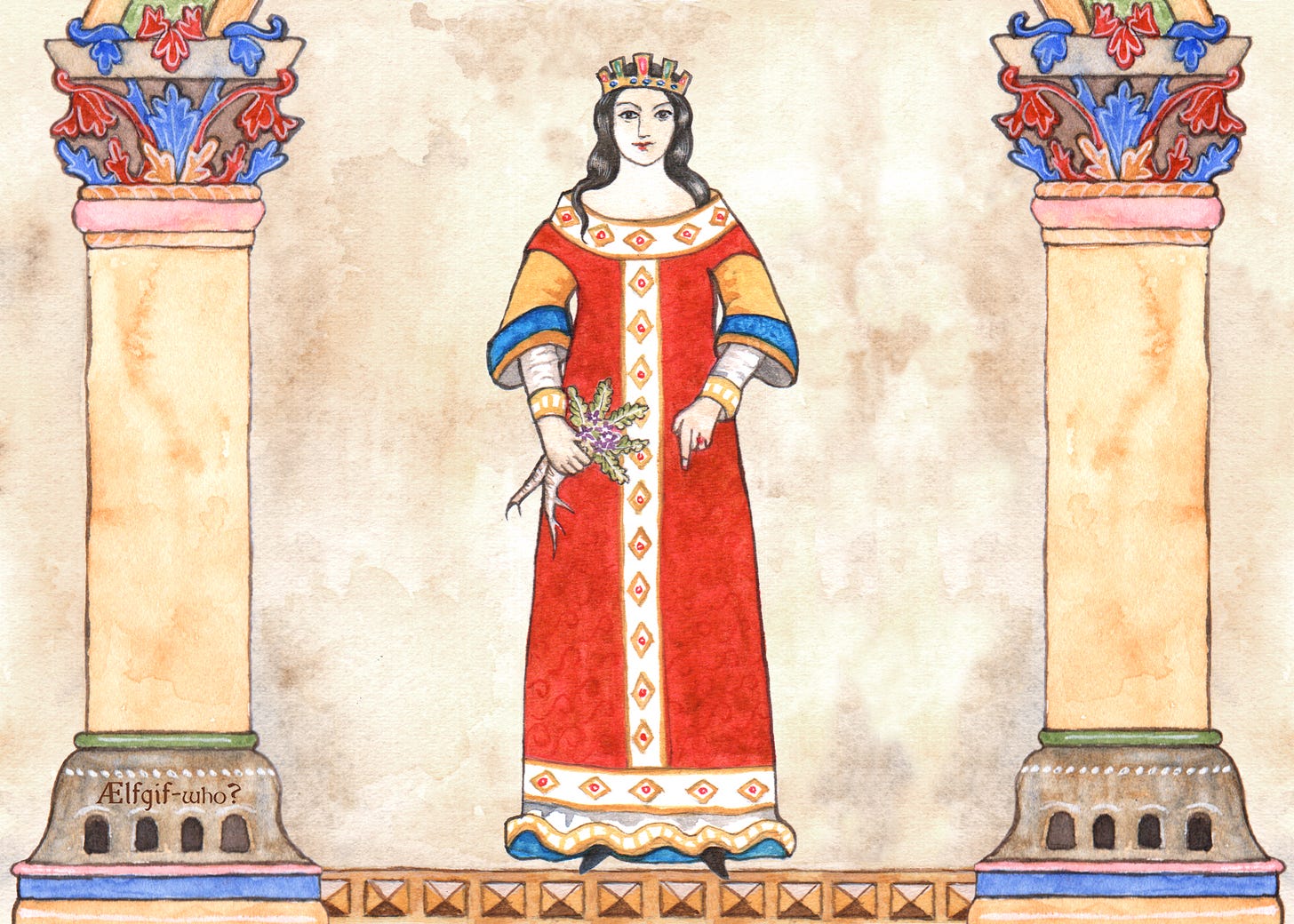
Waldrada: The Woman Accused of Witchcraft during a Medieval Divorce Scandal
Guest Author: Dr Chris Halsted
In the middle of the ninth century, a woman named Waldrada was wrapped up in a royal divorce scandal that could rival that of Henry VIII. Waldrada was the mistress of King Lothar II, who ruled over a Frankish kingdom at the center of the former Carolingian empire. The scandal ensued when Lothar attempted to divorce his wife, Theutberga, and marry Waldrada instead. During Lothar’s campaign for a divorce these two women both faced wild and scandalous accusations from those with political and religious interests in the fate of the royal marriage. What we know about Waldrada comes almost entirely from this highly charged and high-profile divorce case, making her one of the most consequential yet mysterious figures of the middle ages.
Very little is known about Waldrada’s early life. From what we can tell, her background was aristocratic but not especially distinguished. She was likely already in a relationship with Lothar when he became king in 855 at the age of eighteen. However, Lothar did not marry Waldrada, but a woman named Theutberga, the sister of a powerful magnate. Lothar would later claim that he only married Theutberga because her brother had threatened to obstruct his rise to kingship if he refused.
Though Lothar married another woman, Waldrada was not cast aside. Lothar and Waldrada probably already had children by the time of his marriage, and they would go on to have at least four illegitimate children: a son and three daughters. This was of vital importance to the divorce scandal: Lothar’s marriage to Theutberga was childless, and so he had no legitimate heir.
Obtaining a divorce was no simple matter. Churchmen from the time of Lothar’s grandfather Charlemagne onwards had standardized rules surrounding marriage. Not only had it been decided that the keeping of a ‘concubine’ was unlawful, but remarriage after repudiating one’s wife (which could only be done in the case of adultery) was also forbidden. By the 850s, these strict rules on remarriage had come crashing up against the realities of political life among the imperial elite: Lothar’s attempt to divorce his wife and marry Waldrada is only the most famous among several marriage scandals that engulfed his extended family, including his cousin Judith’s marriages to the Kings of Wessex.
These rules motivated Lothar to levy scandalous accusations against his wife Theutberga in an attempt to secure a divorce. The young king accused her of having an incestuous relationship with her brother Hucbert before their marriage, in which they had coupled ‘as men do with men’. This had apparently resulted in a pregnancy that had then been aborted. The reasons for these extreme accusations were twofold: first, incest and ‘sodomy’ were both crimes that made a marriage unlawful; if Lothar could successfully convince the broader political community that his marriage to Theutberga had been unlawful in the first place, he would be then free to marry Waldrada. The second reason was political: by dragging Hucbert into it, Lothar made Theutberga’s most powerful ally complicit in her supposed crimes.
In response to these accusations, voices from Theutberga’s camp accused Waldrada of witchcraft, saying she had bewitched the king as part of a plot to seize power. This was something of a trope in Carolingian gender discourse: a similar accusation had been levied against the Empress Judith in the 830s, for example, and it is possible that something similar befell Arnulf of Carinthia’s queen Uota.
Lothar’s plan to set Theutberga aside and marry Waldrada failed. Under pressure from his bishops, his uncles who ruled the neighboring kingdoms, and Pope Nicholas II, he took Theutberga back in 858. A second attempt at divorce, in 862, was temporarily successful, and Waldrada was even presented to the court as Lothar’s queen, but in 863 her fortunes turned again. Nicholas annulled the divorce and excommunicated Waldrada.
By this point even Theutberga wished for divorce, wanting to rid herself of her troublesome involvement with Lothar and retire to a convent. Both Waldrada and Theutberga’s fortunes had risen and fallen tumultuously alongside Lothar’s campaign for divorce. The political wrangling with Pope Nicholas ended with his death in 867. Nicholas’ successor, Adrian II, was more generous to the women involved, giving Theutberga permission to live without Lothar, and lifting Waldrada’s excommunication.
In 869, Lothar made the journey to Italy to try to convince the pope that he should be allowed to once more marry Waldrada, but on the way there he fell ill and died, the issue of his marriage still unresolved. His uncles immediately divided his kingdom between them — Lothar still had no legitimate heirs. Lothar’s failed marriage politics had led to the failure of his kingdom.
For a variety of reasons — the sensational nature of the accusations, the novelty of a royal divorce and remarriage, and the political importance of reproduction by the heirless Lothar — this crisis became possibly the best documented Carolingian scandal. Kings and popes wrote letter after letter, bishops and churchmen compiled manuscripts on church law, historians marked down their opinions both during and after the crisis. Perhaps our best source for the crisis is De Divortio, a lengthy treatise on the matter by Archbishop Hincmar of Rheims, one of the most eminent churchmen of the day. Hincmar’s work provides a primer through which modern historians can understand the issues at stake — up to and including a discussion of love potions, succubi, and other relevant supernatural issues.
Although Lothar died with the issue still unresolved, it was the anti-Waldrada camp that won out in the history books. Later writers remember Waldrada as a seducer and tyrant, the archetype of the scheming woman trying to supplant the rightful queen Theutberga. The later chronicler Regino of Prüm would blame the entire downfall of the Carolingian dynasty on Waldrada and Lothar’s relationship, arguing that the sexual sin of their relationship prompted God to curse the family with sterility. The Life of St. Deicolus, written in the tenth century, blames Waldrada for the mismanagement of the monastery of Lure, implying that her sins caused it to be attacked by Hungarians some eighty years later. Over the course of the long Carolingian era, Waldrada became a scapegoat, blameable for seemingly anything that went wrong which could be even vaguely connected to her.
But the person of Waldrada gets lost within the scandal that surrounded her. Among the accusations and slanders, the arguments about canon law, politics and magic, we get very little sense of her actual personality. What was her relationship to Lothar like? Was she eager to be a queen, or horrified by the continent-wide drama her relationship had catalyzed? Modern historians have often followed medieval ones in blaming Waldrada for the entire affair, portraying her as a power-hungry and ambitious woman — this is surely nothing more than misogyny, as the polemic sources surrounding the case give us very little reason to trust them.
Against the backdrop of a century of royal marriage controversies, starting with Wallis Simpson and refusing to relent since, it’s worth taking a moment to consider the person in the midst of the chaos. Very shortly, we will witness the coronation of a king and queen with at least a superficially similar story — marriage, affair, divorce, and remarriage, though this one without the accusations of witchcraft. We know the players in the modern case all too well — but who Waldrada was, and the actual facts and events of the relationship at the center of her sensational case, have become swallowed up in the history.





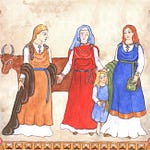
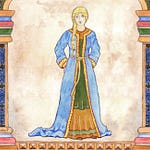
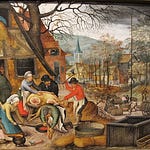
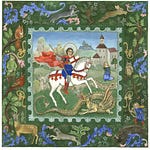



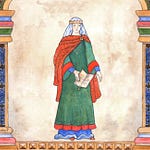
Share this post